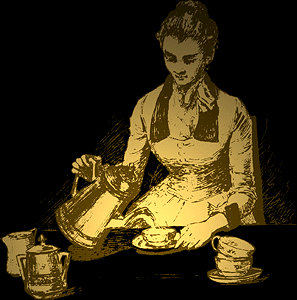
I was never quite sure where my fascination with this tea came from. More than likely, it was my exceptional beginning (or so I remember it) with the concept of "high tea" and my introduction to the blissful concoction of subtly lemon scones oozing with Devonshire cream and strawberry preserves. I had an array of teas from which to choose, but settled, somehow, on this one "Earl Grey" in its unassuming yellow paper wrapping. |

|
I decided one day, for sheer amusement, that it might be fun to create a web page chronicling the different varieties of Earl Grey tea. I do not claim to be an expert on the subject. Indeed, when I decided to tootle around the internet looking for 'bergamot' I ran into a number of differing definitions and descriptions on the origin of Earl Grey. The novelty of the tea list is the focus of this page, and my ratings and comments are put down for my reference as much as anyone else's. I hope that you will find it useful, and keep in mind that I am simply a lover of Earl Grey, and not a Tea Master of any sort.

Earl Grey: This popular black tea was named for Charles Grey, the second earl in his line, who was also prime minister to King William IV in the early 19th century. An amalgamation of Indian and Sri Lankan teas, Earl Grey gets its elusive flavor from oil of bergamot. The Earl is said to have been given the recipe by a Chinese mandarin with whom he was friends. Bergamot [BER-gah-mot]: A small acidic orange with a peel that yields an essential oil called essence of bergamot which is used for perfumes and confections. The peel is used in Earl Grey tea. It's also candied and used in the same way as other candied fruit peels. |